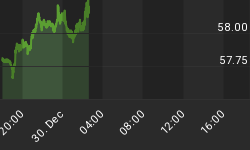With car sales down, trade tariffs biting and investors trying very hard to see what the long-term plan is here, Ford stock is down nearly 30 percent this year, dipping below $9 a share by pre-market trading Wednesday, and more bad news on the way.
Morgan Stanley is estimating that Ford will have to ditch 12 percent of its workforce in order to make good on CEO Jim Hackett’s $25.5-billion restructuring plan, as the auto company claims that Trump’s tariffs have already cost it $1 billion in profit—and counting.
That 12 percent represents 24,000 of Ford’s 202,000-strong workforce globally, according to a note to clients from Morgan Stanley, whose analysts noted that “such a magnitude of reduction is not without precedent in the auto industry”.
Ford, though, has remained tight-lipped on the potential reduction numbers.
But it’s not being tight-lipped about the damage tariffs have done and will continue to do.
“The metals tariffs took about $1 billion in profit from us -- and the irony is we source most of that in the U.S. today anyways,” Hackett said in an interview on Bloomberg Television. “If it goes on longer, there will be more damage.”
News of the layoffs should have help prop up the stock a bit, but that hasn’t been the case. That’s because investors are still searching in vain for a long-term strategy for the U.S. No. 2 automaker. So far, they don’t see it.
Instead, they see reports coming out of Missouri that Ford has temporarily halted production of transit vans—a move that will idle 2,000 workers for a couple of weeks later this month.
They also see an auto giant that has failed to keep up with its peers.
And so far, they aren’t seeing how the $25.5-billion restructuring is going to have an positive impact in terms of keeping costs down and still remaining competitive. While U.S. auto sales across the industry were down 7 percent in September, for Ford, they were down 11.2 percent. Even its best-selling F-Series truck saw sales down 9 percent, according to Reuters, so investor confidence isn’t exactly at a high. Related: UK Prepares For Cyberwar As Relations With Russia Deteriorate
Even worse, Ford is only selling 32.8 vehicles per employee, compared to GM’s 52.7 vehicles per employee. This is where it gets tricky for investors, who are asking how big workforce reductions are going to improve these numbers.
It can’t all be blamed on tariffs, of course. Ford has been in trouble for a while—but tariffs are poised to make things even tougher.
The ‘new NAFTA’ deal—the U.S.-Mexico-Canada Agreement—has some worried that Washington will now have more reason to gun for auto tariffs because the USMCA changes the “rules of origin” for cars in terms of how much of each vehicle must be made in North America in order to be considered duty-free. And this won’t mean as much without tariffs.
Cited by the Washington Examiner, Chicago Council on Global Affairs senior fellow Phil Levy says that without auto tariffs, companies might be willing to pay the 2.5-percent taxes on cars that aren’t 75-percent North American origin (as now required). But if they have to pay tariffs of 25 percent instead, then compliance would be much greater.
But that’s just another potential threat to Ford. Trump’s metals tariffs—on steel and aluminum—are already beyond threatening. This is what’s already set to cost the company $1 billion, according to its own accounting.
That $1 billion, says Hackett, represents a year-over-year increase from March through 2019.
"The irony is we source most of that in the U.S. today anyways," Hackett told Bloomberg, noting that Ford gets most of its metals domestically and suppliers have raised their prices.
Related: Turning Wasted Natural Gas Into Bitcoin
Still, Ford isn’t the only one feeling the pain—even if it is lagging behind its peers.
"Everyone's sensing some level of contraction," Karl Brauer, an auto analyst with Kelley Blue Book, told the Detroit News. "It's ironic because the economy seems to be as good as it could be.
"What’s unique to Ford is I think they’ve been more challenged in long-term assessment planning. The average investor hasn’t got the same level of confidence (in Ford) as other manufacturers."
By Charles Benavidez for Safehaven.com
More Top Reads From Safehaven.com:

















